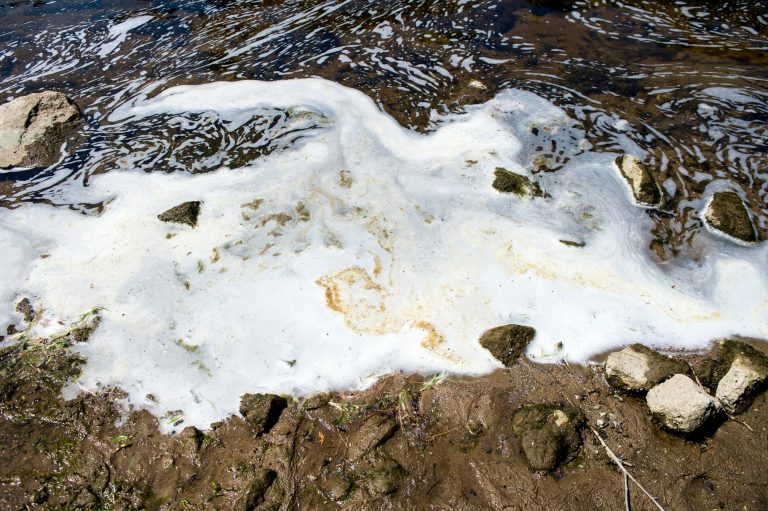E.P.A. proposes weaker standards on chemicals contaminating drinking water
By Eric Lipton & Julie Turkewitz | The New York Times | April 29, 2019

Read the full article by Eric Lipton and Julie Turkewitz
“After pressure from the Defense Department, the Environmental Protection Agency significantly weakened a proposed standard for cleaning up groundwater pollution caused by toxic chemicals that contaminate drinking water consumed by millions of Americans and that have been commonly used at military bases.
Standards released by the agency on Thursday eliminated entirely a section that would have addressed how it would respond to what it has described as ‘immediate threats posed by hazardous waste sites.’ Those short-term responses, known as removal actions, can include excavating contaminated soil or building a security fence around a toxic area.
Exposure to the class of toxic chemicals, called per-and polyfluoroalkyl substances, has been linked in recent years to kidney cancer, testicular cancer, thyroid disease, high cholesterol and ulcerative colitis, among other diseases. Animal studies also show delays in development.
For decades, the substances, more commonly known as PFAS, have been placed in all kinds of everyday products — nonstick pans, clothing, furniture. They can also be found in firefighting foams used on military bases, on airfields and by municipal firefighters.
The proposed guidelines — which will now be open for 45 days of public comment before they are completed — could have the largest effect on the Defense Department. The Pentagon has used PFAS-related chemicals extensively as a firefighting tool, and it has confirmed the release or the possible release of the chemicals at 401 locations nationwide, in some cases contaminating known drinking water supplies.
Over the past year, the Pentagon objected to language the E.P.A. had proposed to set these so-called cleanup standards, bringing those concerns to the White House, which coordinates the review of major regulatory proposals.
In the proposal, the E.P.A. had suggested a water contamination level that could incite immediate removal action. That level was 400 parts per trillion of two types of PFAS, a copy of the original proposal shows. That suggestion is now gone.
The recommendations issued Thursday focus instead on longer-term remedial actions — which can take years — to address instances in which the government has confirmed that drinking water supplies have been contaminated.
In those cases, the agency said it expected cleanup or other actions in areas where drinking water supplies have been contaminated with at least 70 parts per trillion of the chemicals. A different threshold could potentially allow many sites that would have faced cleanup requirements based on its original proposal to avoid such efforts.
The proposal also suggests that when water tests for PFAS at 40 parts per trillion, officials should open a larger investigation to evaluate the spread of the chemicals and find responsible parties.
But the agency does not explicitly ask polluters to take action in areas around the United States where polluted water is not being used as drinking water.
The guidelines immediately drew criticism from Senator Thomas R. Carper of Delaware, the top Senate Democrat who helps oversee the E.P.A., and from environmentalists and health advocates who have urged the agency to aggressively confront the issue.
A senior scientist at the Environmental Working Group, David Andrews, criticized the guidelines as a ‘woefully inadequate response’ to what has been widely called one of the most pressing public health threats in the United States. The groundwater contamination has turned up in at least 33 states and affects an estimated 10 million Americans.
‘It is a Band-Aid, at best, that does essentially nothing to help the hundreds — perhaps thousands — of communities, in almost every state, with contaminated tap water,’ he said. ‘Americans need real and swift action to address this crisis, not more toothless proposals from the Trump administration.’
An E.P.A. spokesman said it was incorrect to assert that the changes in the proposed guidelines meant that the agency would not advocate immediate steps to protect public health when such actions were warranted.
‘E.P.A. has worked and will continue to work with state, tribal, and local governments to protect the public health,’ said the spokesman, John Konkus.
For months, people living in communities with contaminated groundwater have asked the E.P.A. to push for cleanup, concerned that groundwater will eventually become drinking water.
Those places include cities and towns near Peterson Air Force Base in Colorado; the former Pease Air Force Base in New Hampshire; Stewart Air National Guard Base in New York; Wright-Patterson Air Force Base in Ohio; and Cannon Air Force Base in New Mexico.
Oscoda, Mich., home to the former Wurtsmith Air Force Base, is among the towns with extensive PFAS contamination in its groundwater.
In an interview, Aaron Weed, the town supervisor and a 22-year veteran of the Air Force, said the guidelines gave him little hope that the Defense Department would move quickly to address cleanup…”
This content provided by the PFAS Project.
Location:
Topics: